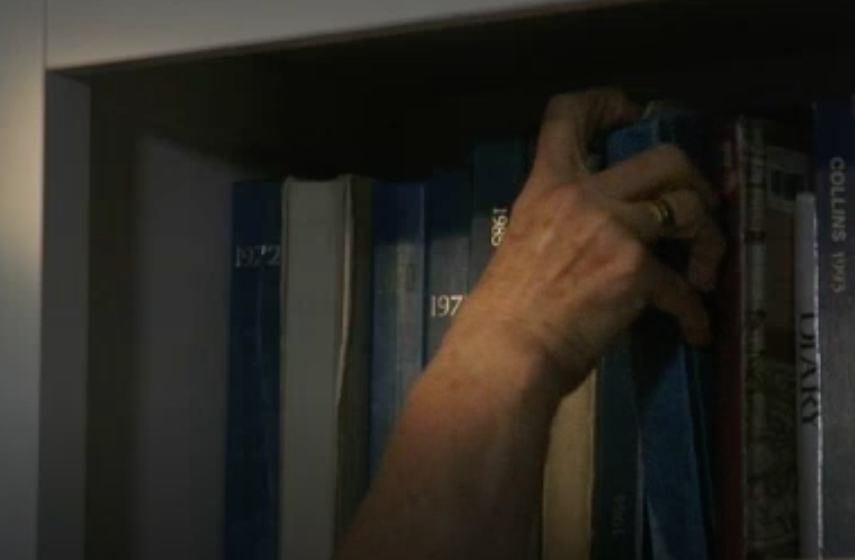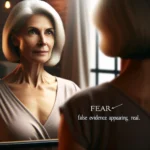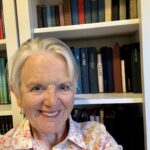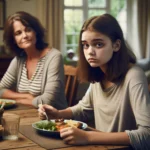Recovery IS Possible Across the Lifespan

Recovery IS Possible Across the Lifespan
Eating disorders don’t only affect children and teenagers. They affect people across their lifespan. If you are an adult experiencing eating disorder symptoms, the good news is that recovery is possible. For 44 years, from age 11 to 55, an eating disorder locked me in a cell in my mind. Finding the key to escape was difficult. I am glad I persevered. Now 68, I enjoy life to the full.
My eating disorder (ED) began in childhood, but some people are in their 30s, 40s or older, when their illness develops. Two Australian-based studies reveal the prevalence of EDs in adults is only a little less than that of adolescents – around 16 per cent compared with 22 per cent.
Some people, like me, miss out on vital early intervention with evidence-based treatment and do not ‘grow out’ of their eating disorder. They continue to live a part life at the behest of their illness. During adolescence and early adulthood, ED was my secret ‘companion’, a ‘voice in my head’. I constantly referred to it for managing whatever stresses popped up in everyday life. It was my secret helper for coping with anxieties of exams at school, and the terror of having to stand and address the class. When I began dating boys, ED was an ever-ready critic and minder. Of course, ED accompanied me down the aisle when I married at age 20. Until my mid-20s, I considered this ‘voice’ a friend who helped me to cope with stressful situations.
I did not know any other way of coping because ED had sabotaged childhood development of normal, healthy coping skills. Unfortunately, ED is a hard taskmaster and is never satisfied. ED wants to isolate and conquer the life of the person – their health and their relationships. ED’s demands increased during my pregnancies and by age 26, living had become a struggle. Fears developed that either a) I was an incredibly weak person for not coping with everyday life or b) I was going insane and would lose custody of my children. The shame and secrecy surrounding ED discouraged me from accessing any kind of health care until age 28, when love for my children helped me to find the strength to reveal my story of self-harm and private anguish to a doctor for the first time.
There was no quick fix!
Some six years of misdiagnosis followed. I was in my early to mid-30s when a psychiatrist provided a correct diagnosis of my ED and recovery started in earnest. Some losses could not be salvaged. My ED had convinced me that my husband was the reason I was not coping with life, so we had divorced; my ED also convinced my family of origin that I was unworthy, unreliable and a ‘problem’, leading to estrangement.
For 44 years, this was my life; incarceration.
Upon reconnecting with 51 per cent of healthy me at age 55, healing of self and overall health accelerated. I came out of that horrid ED-prison and began to look around at the real world. I started to live.
Wondering if others were suffering alone and in silence too, I wrote my memoir. I thought that if my story helped one person to know they were not alone, that their bothersome thoughts and behaviors which caused them to be misunderstood were due to an illness and not due to a personal weakness, and that they could be helped, then my suffering would be worthwhile.
Diaries kept since age 11, when the ED began, were the major resource for my memoir. The diaries, which remain a testimony to the struggles and ultimate victory over ED, in my 60s became the major resource for a PhD in Creative Writing and Using Writing as a Therapy for Eating Disorders.
The anxieties and fears that had compounded social isolation and secrecy, sapped confidence and self-esteem while under the dark cloak of the ED, gave way to a determined resolve to expose ED’s devious and damaging ways to the light, to the world.
In doing so, I have amassed a new family, a global family of choice – comprising people who are like-minded, understanding, supportive, non-judgmental and share a desire and passion to provide people everywhere with the truths about weight and eating disorders. At the same time, I cherish a loving and caring relationship with my four children, their dad, and our five grandchildren. Life is beautiful.
But many people remain imprisoned in an ED. According to the experience of Australian clinical psychologist, Dr Gemma Sharp, there has been an increase in the number of older women in their 40s, 50s and 60s, presenting for treatment.
“I have seen an increase in women aged 40+ accessing treatment at my clinic,” Dr Sharp said. This was particularly the case after Dr Sharp wrote a blog for the Butterfly Foundation in 2019 where she mentioned the experience of older people in treatment.
“The research into middle and older aged people with EDs is very limited and suggests that most older people are not involved in any form of treatment,” Dr Sharp said. She referred to a report of one service in the United States that had seen a 42 per cent increase in treatment seeking in this age group.
There is a lot of social and cultural pressure on people to keep looking good as they age.
Advocacy group the Butterfly Foundation has found that about 5 per cent of women aged 45 and over are currently living with an ED such as anorexia or bulimia or compulsive eating.
Two things seem to be happening. Firstly, EDs are complex mental illnesses which can be very long term if early intervention has been unavailable or unsuccessful. Secondly, some people are triggered with an ED later in life through the challenges of transitional events such as menopause, empty nest, job loss, death of a partner or relationship breakup.
Reaching out for help in midlife or older remains difficult. In Australia, most treatment programs offered currently are targeted at younger Australians and this may deter older people from reaching out for help.
ED encourages thoughts like “I am the only person over 40 in this entire ward. I must be incredibly weak. I’m hopeless. I don’t deserve to be here.”
Specialised services for ED would make access easier for many people in their 40s, 50s, 60s and beyond – knowing they are not alone, and that others are ‘in the same boat’ can be reassuring. Friendships can be formed that will endure beyond the ED and embrace supportive relationships in exploring and meeting the challenges of, and opportunities in, everyday life without the ED.
Dr Sharp has opinions on how ED services for older people might work. It would involve keeping the same service structures, but establishing a specific middle and older aged treatment stream.
“This stream would recognise this unique life stage and all the extra factors that come along with it – such as relationships, children, careers, and ageing,” Dr Sharp said.
“It would allow people to create a network of similarly aged peers who can offer support to each other. It would also need to be a very welcoming service – recognising how difficult it is for people this age to seek treatment. It would also need to be flexible with treatment – recognising that people in this age group have extra demands on their time so attending a clinic on a daily basis might not be possible.”
We have come a long way in understanding and treating eating disorders, in educating the public and health professionals and correcting misconceptions. Well-balanced and researched media coverage is assisting in getting the right messages out. For instance, in Australia last week we had national mainstream exposure on eating disorders in mid-life and beyond. Even a five-minute segment is a big step forward.
Only a few years ago, if such a story had aired at all at this mainstream level, it would have been sensationalized or ridiculed and laced with shame and stigma. When A Girl Called Tim was released, I turned down many TV media invitations because they insisted on using skeletal images to shock the audience, which would totally give the wrong message.
Today, the right messages are being voiced at all levels, and this makes me very happy.
If you are experiencing any eating disorder thoughts or symptoms, reach out for help today.
You deserve a full life. Your life.
Where to go for help
United States
MEDA: Multi-Service Eating Disorders Association –medainc.org
NEDA: National Eating Disorders Association – nationaleatingdisorders.org
Project Heal: theprojectheal.org
National Association of Anorexia Nervosa and Associated Disorders: anad.org
The Emily Program: emilyprogram.com
Australia
The Butterfly Foundation: https://www.thebutterflyfoundation.org.au/
United Kingdom
BEAT: https://www.beateatingdisorders.org.uk/
Make your experience count – write your story
For guidance in writing your story, contact June Alexander at email: june@junealexander.com





